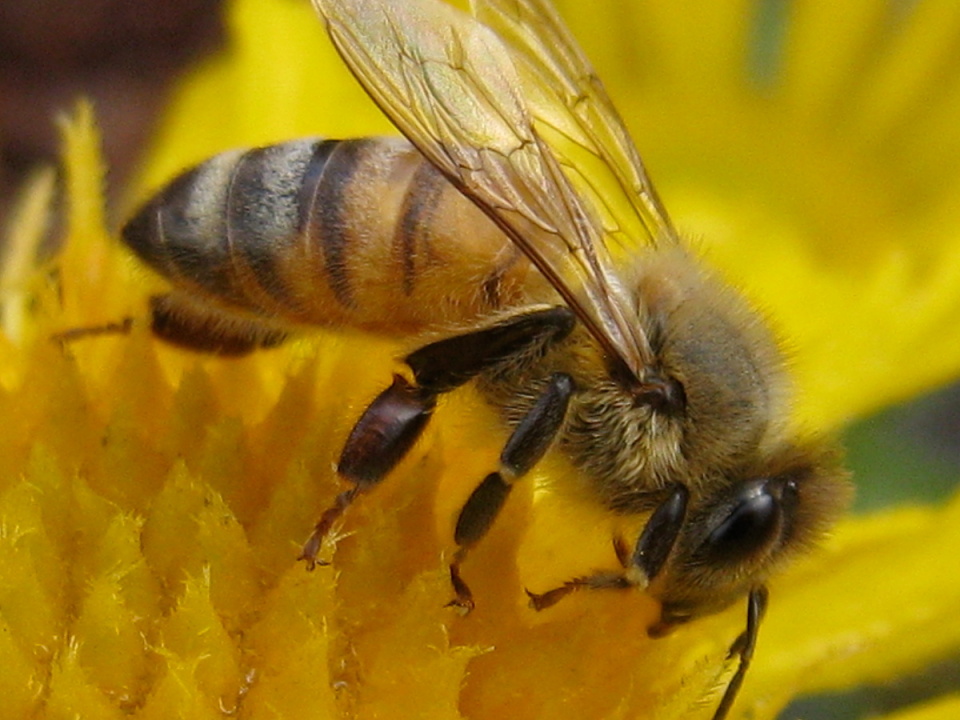A ...Bee...
...See, I didn't know this. I don't remember ANYBODY, a teacher...ANYBODY telling me that honey bees were not native to the Americas. So, a lot of this insect, (and birds for that matter) information is getting to me later in my life. And if this was told to me...it didn't sink in. I didn't take zoology. Maybe I should have. I may not be a fan of starlings who were also introduced to N. America, but I'm glad honey bees were.
Has anybody else watched Earthflight that has been on PBS? We've missed a few episodes, but wowzer, that's just amazing. If you love nature and birds and extraordinary photography....maybe they will re-run that series and you can see it.
The western honey bee is native to the continents of Europe, Asia, and Africa. As of the early 1600s, the insect was introduced to North America, with subsequent introductions of other European subspecies two centuries later. Since then, they have spread throughout the Americas.
Western honey bees differentiated into geographic races as they spread from Africa into Eurasia. Currently, 28 subspecies based on these geographic variations are recognized. All races are cross-fertile, though reproductive adaptations may make crossing unlikely. The 28 subspecies can be assigned to one of four major branches based on work by Ruttner, and subsequently confirmed by analysis of mitochondrial DNA. African subspecies are assigned to branch A, northwest European subspecies to branch M, southwest European subspecies to branch C, and Mideast subspecies to branch O. The subspecies are grouped and listed in the sidebar. Regions with localized variations may become identified subspecies in the near future, such as A. m. pomonella from the Tian Shan Mountains, which would be included in the Mideast subspecies branch.
Geographic isolation led to numerous adaptations as honey bees spread after the last ice age. These adaptations include brood cycles synchronized with the bloom period of local flora, forming a winter cluster in colder climates, migratory swarming in Africa, enhanced foraging behavior in desert areas, and numerous other inherited traits.
- 6
- 0
- Canon PowerShot SD870 IS
- f/2.8
- 5mm
- 100


Comments
Sign in or get an account to comment.


